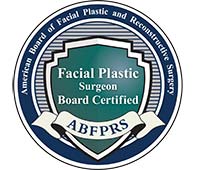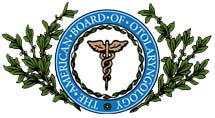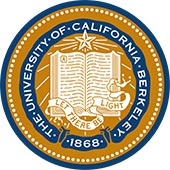Chronic Sinusitis
Chronic rhinosinusitis is a very common medical disorder that affects the nose and inner nasal sinuses with a characteristic inflammation of the mucosa of the internal paranasal sinuses. Chronic sinusitis is defined as persistent sinus and nasal symptoms that last greater than 12 weeks. The underlying cause of chronic rhinosinusitis is incompletely understood, however, generally, inflammation due to a variety of causes is felt to be the better explanation rather than simply focusing on an infection as the primary source.
DIAGNOSIS OF CHRONIC RHINOSINUSITIS
Chronic rhinosinusitis is diagnosed when the characteristic and specific symptoms of sinusitis involving the nasal cavity and paranasal sinuses last for more than 12 weeks. In addition, a confirmation by nasal endoscopy and radiographic imaging such as CT scan provides additional assistance with this diagnosis. Successful treatment can be challenging but in most cases significant success can be achieved. specific symptoms of sinusitis involving the nasal cavity and paranasal sinuses last for more than 12 weeks.
Commonly, the diagnosis of chronic sinusitis is indicated when individuals have some or all of the following symptoms:
- Greater than 12 weeks duration of sinus symptoms
- Nasal airway obstruction
- Nasal congestion and nasal drainage
- Paranasal sinus pain or pressure
- Diminished smell
- Headache
- Diminished taste
- Inflammation of sinuses on CT scan
- Inflammation and swelling of nasal cavity mucosa on nasal endoscopy
FACTORS ASSOCIATED WITH CHRONIC RHINOSINUSITIS
Common etiological factors associated with chronic rhinosinusitis include the following:
- Mucociliary dyskinesia
- Cystic fibrosis
- Granulomatous disease
- GERD
- Aspirin hypersensitivity
- Nasal polyposis
- Asthma
- Immunodeficiency syndromes
- Significant upper respiratory tract viral infection
- Environmental irritant factors (i.e. dust, smog, smoke, chemicals)
- Previous nasal trauma and nasal septum deviation
- Chronic allergic rhinitis
- Kartagener’s syndrome
- Sinus bacterial infection
- Fungal infection

ENDOSCOPIC SINUS SURGERY
When medical therapy does not provide sufficient relief, when the suffering individual is significantly frustrated, when month after month goes by and the problem persists, when antibiotic resistance becomes more of a concern due to repeated regimens, it is time for Endoscopic Sinus Surgery. In the majority of instances of chronic sinusitis refractory to medical treatment, endoscopic sinus surgery provides significant relief.
Endoscopic sinus surgery is performed under general anesthesia. During the procedure, the endoscope is critical in providing meticulous evaluation and location of the areas of concern. It is placed within the nasal cavity, for visualization of the nasal cavity and the communicating sinuses. Stereotactic guidance (simultaneous video screen view of instrument positioning within the nasal and sinus cavities) is also used and is additionally extremely helpful. Essentially, the microdebrider trims obstructing tissue, which opens the sinuses doorways. Also, any obstruction due to a deviated (cartilaginous and boney central) septum is corrected. And, prominent turbinate membranes are trimmed or reduced as needed. Thus, the inflamed and obstructed nasal sinuses are corrected via opening of the nasal cavity, opening of the sinuses, and reduction of redundant swollen turbinate membranes.
The overall goal is to reduce the symptoms of chronic sinusitis, particularly the problematic headache and paranasal sinus pressure and pain. In the majority of instances, patients achieve improvement of their overall symptoms and improvement in their quality of life. Only after the surgery, do patients better appreciate what it feels like to have normal nasal and sinus function.
Balloon Sinuplasty
Balloon sinuplasty has become an additional technology within the Sinus Surgeon’s armamentarium that provides even additional finesse for sinus surgery, and adds to the great additions of stereotactic guidance and endoscopic visualization technologies. Particularly, when treating the narrow frontal sinus, and the hard to get to sphenoid sinus, balloon sinuplasty provides less invasive and greater finesse opening of these sinuses. Many sinus surgeons are performing balloon sinus surgery under local anesthesia.
Low Risk Procedures
Every procedure requires some form of anesthesia and traditionally this is a General Anesthesia, meaning you are completely knocked out. At Facial Beauty, we utilize cutting-edge local anesthesia procedures where you are not fully knocked out but completely comfortable. The advantage of Local Anesthesia that there are less complications & faster recovery time. Our procedures generally take from an hour and thirty minutes to no more than three hours, allowing us to dramatically reduce any risk involved in the procedure.


Limited Downtime
The biggest drawback to major facial surgery is the downtime. While recovery time can vary case by case, generally patients can return to work between seven to ten days after the procedure. We do everything we can for our patients to get you back to your family and back to your daily life of activity & exercise as soon as possible.
Simple & Affordable Financing
At Facial Beauty, we offer low monthly payment plans and pre-qualifications for any additional treatments, affordability has never been easier. If you’ve ever let financing stand in your way of a new you, come talk to us about options you may not know you had. We can even do pre-approvals over the phone so please feel free to call us anytime.


David Santos MD, FACS
Dr David Santos was the Medical Director for Lifestyle Lift, responsible for hundreds of facelift surgeons and thousands of procedures. Having performed over 4,000 facelift procedures himself, Dr. Santos is committed to finding cutting edge techniques to reduce the risk and minimize the downtime of facelift procedures.
- Member American Board of Facial Plastic and Reconstructive Surgery
- Member American Board of Otolarnyngology – Head and Neck Surgery
- Member American Academy of Facial Plastic and Reconstructive Surgery







